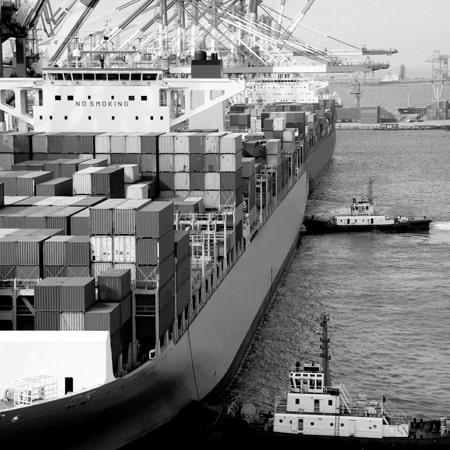Full Container Load (FCL) for Secure Sea Transport
Full container load (FCL) is a method of transporting goods by sea, where the goods are packed in a sea container. Sea containers are standardised, so that the processes involved in their transport are the same regardless of the origin, weight, dimensions, or specifics of the goods being transported. For the most common maritime container standards, click here. The standardisation of containers was driven by the need to deliver sea containers to the sender’s door as well as the need to ensure that goods transported by sea could be unloaded as quickly as possible at the ports of departure and destination. Owners of the goods to be transported were also concerned that the products ordered would not be transhipped at intermediate ports and that the container, sealed by the exporter, would not be opened until delivery to the consignee. With sea freight in full containers, theft or mysterious disappearance is virtually impossible and the risk of damage to the cargo is minimal. The standardisation of containers on the world market led to containerisation (the transport of goods by different means of transport without transhipment), which has continued to the present day, with a wide variety of goods being transported in containers on every conceivable route.
Full container transport is a popular mode of sea transport for goods from the Far East to Lithuania, Latvia and Estonia and is used for the export of Lithuanian and Latvian goods outside Europe. Full sea containers transport not only general cargo, but also liquid, bulk and oversized or temperature-controlled goods. The maritime transport services are selected according to the nature of the goods and the appropriate needs.
Virtually all container traffic to the Baltic Sea enters via the major European ports of Hamburg, Bremerhaven (Germany), Rotterdam (Netherlands) and Antwerpen (Belgium). The shallow Baltic Sea ports require containers to be transferred from ocean-going vessels to smaller feeder container vessels in the inner seas. Depending on which shipping line is transporting your container, how many stopovers are planned, and which port the transhipment will take place in, the total transport time can vary by up to 10-14 days.
Sea freight transport by partial containers (LCL)
Combined sea freight transport (sea + land)
Sea freight delivery by Viking and Vilnius Shuttle
Useful:
– In maritime transport 1 cubic metre is equivalent to 1000 kg.
– The liability of maritime carriers is limited to 2 SDR/kg and liability is defined by the Hague Rules of 1924 and its subsequent amendments.
– In maritime transport, a Bill of Lading is used.
– Klaipėda seaport online.
– Tracking of cargo by sea online.
– Types and dimensions of containers used in maritime transport.
– General ship casualty.
Questions? Contact us by email info.lt@a2cargo.com, info.lv@a2cargo.com or
call +370 5 215 13 52, +371 67 383655.
Do you want to get a quote? Fill in the form.

